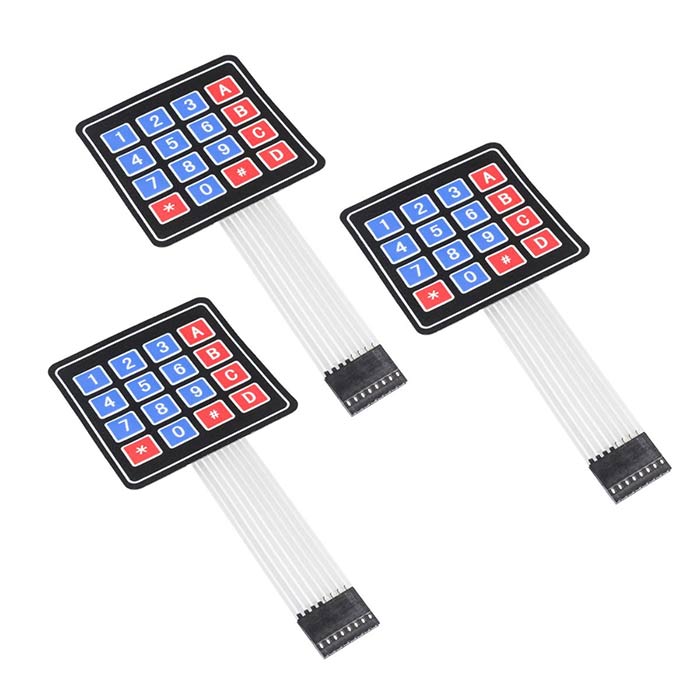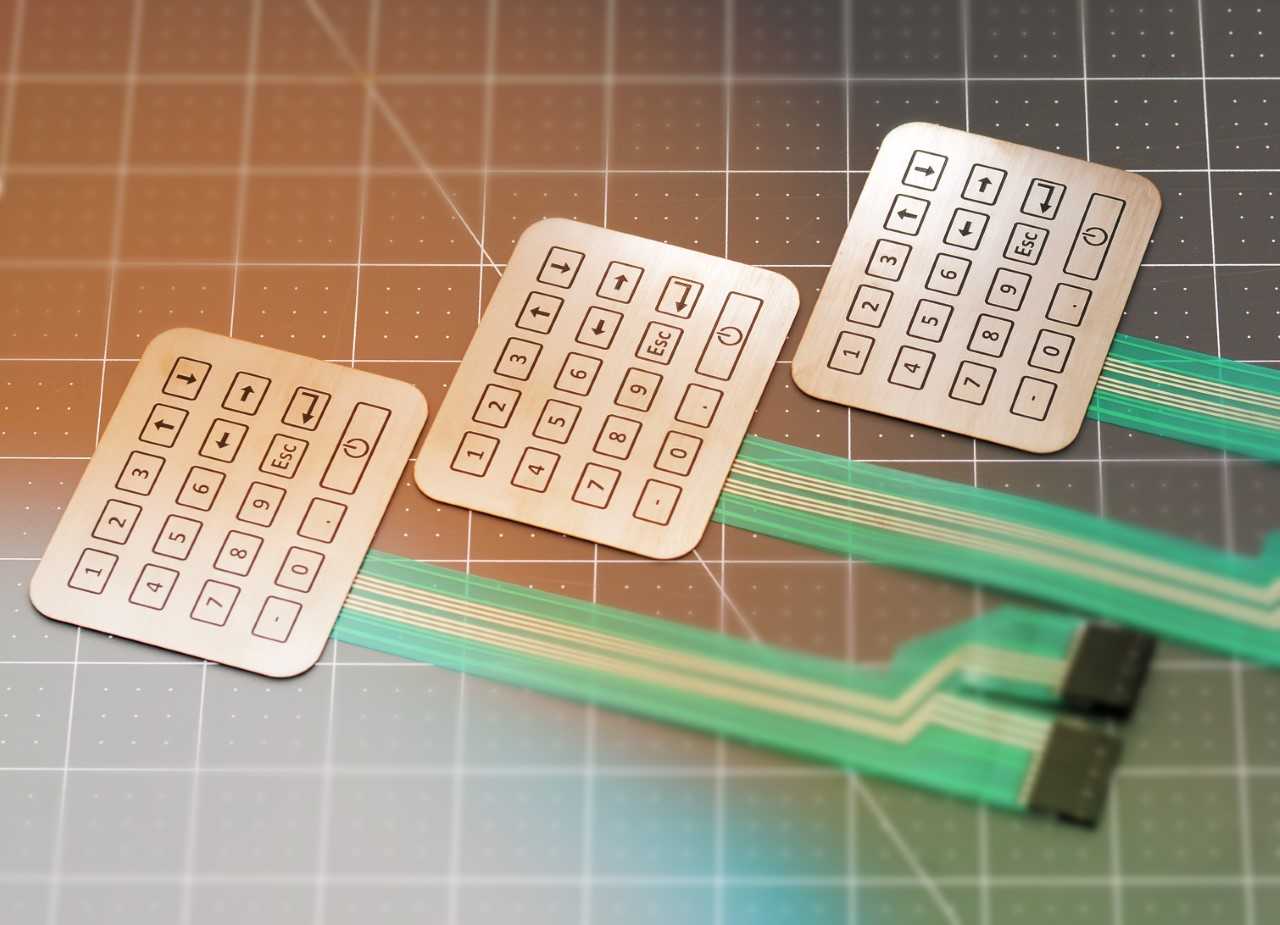You’ll notice the difference when collaborating with a premium membrane switch manufacturer.
You’ll notice the difference when collaborating with a premium membrane switch manufacturer.
Blog Article
Everything About Membrane Switch: Recognizing Its Style and Capability
When you think of the control user interfaces in modern-day devices, membrane layer switches frequently enter your mind. These elements are a lot more than just switches; they blend style and performance effortlessly. Recognizing how they function and what makes them reliable can alter your perspective on everyday electronics. There are nuances to their layout and efficiency that you could not be conscious of. Let's discover what collections membrane switches over apart from other control systems.
What Are Membrane Layer Buttons?

Membrane layer switches can also be personalized relating to form, dimension, and graphics, allowing makers to produce one-of-a-kind interfaces tailored to certain products. Overall, membrane buttons play a substantial role in enhancing individual experience throughout a broad selection of applications.
Exactly How Membrane Layer Switches Job
When you press a key on a membrane switch, it turns on a straightforward yet effective mechanism. The leading layer, typically made of adaptable material, lowers onto a conductive layer under it. This activity bridges the void in between conductive traces, completing an electric circuit. As quickly as the circuit closes, it sends a signal to the tool's controller, which interprets your input.
You'll observe that the responsive responses varies based upon the switch design, using either a soft click or a more obvious response. When you launch the key, the membrane returns to its original position, reopening the circuit and quiting the signal. This procedure happens almost instantly, guaranteeing a receptive customer experience.
Membrane buttons are preferred as a result of their toughness and resistance to dirt and dampness, making them suitable for different applications, from house appliances to medical devices. Understanding this operation helps you appreciate their widespread usage.
Trick Elements of Membrane Switches
Comprehending the key parts of membrane layer switches is basic for understanding their performance and layout. At the core, you'll discover the visuals overlay, which provides the visual interface for customers. Under that, there's a spacer layer that divides the circuit layers, ensuring that they don't make contact until pushed. The circuit layer is where the magic happens; it includes conductive traces that finish the circuit when you push the button. An additional necessary component is the glue support, enabling the switch to abide by surfaces safely. The safety layer guards versus environmental factors and put on, extending the switch's life expectancy. Each component plays a considerable function in making certain reliable efficiency and user interaction. By understanding these components, you'll get insight right into exactly how membrane switches operate and their importance in different applications.
Materials Made Use Of in Membrane Layer Switch Over Layout
The efficiency and longevity of membrane switches heavily rely on the materials utilized in their layout. You commonly run into polyester and polycarbonate as primary substrates due to their excellent stamina and flexibility. These products resist scratches and chemicals, making them suitable for demanding settings.
The conductive layers typically use silver or carbon, picked for their integrity and conductivity. membrane switch manufacturer. Silver provides exceptional performance, while carbon is an economical alternative. For the overlay, you may think about a matte or shiny surface, relying on your aesthetic requirements and individual experience
Make certain to select adhesives that withstand environmental variables like temperature and moisture. Choosing the ideal materials will certainly ensure your membrane layer switch stands the examination of time.
Style Considerations for Membrane Layer Buttons
While designing membrane switches, it's essential to take right into account numerous aspects that affect their capability and customer experience. Start by focusing on the design and button size; make certain they're user-friendly and simple to browse.
Don't ignore the visuals layout; clear labeling and color contrast are considerable for exposure. Validate your design fits environmental elements, like dampness or temperature variants, which could affect performance. Keep in mind the significance of testing prototypes with real users to gather feedback and make needed changes. This repetitive procedure helps you improve the style, validating it satisfies both practical and visual needs effectively. By very carefully taking into consideration these aspects, you'll develop a membrane switch that boosts use and contentment.
Applications of Membrane Switches
Membrane layer buttons are functional components discovered in numerous applications, from commercial devices to consumer electronics. You'll see their impact in makers that require sturdy interfaces and in gadgets that take advantage of smooth styles. Recognizing these applications helps you appreciate the capability and practicality of membrane switches in daily technology.
Industrial Tools Usage
When you're seeking to improve the capability of commercial tools, membrane switches offer a reputable option that incorporates resilience with user-friendly layout. These buttons are excellent for extreme environments, offering resistance to dirt, dampness, and chemicals. You'll discover them in control panels for manufacturing devices, cooling and heating systems, and clinical gadgets, where accuracy and responsiveness are crucial. Their low profile indicates they fit flawlessly right into various tools, saving useful area while keeping simplicity of use. With personalized graphics and backlighting choices, you can produce an intuitive interface for operators, boosting effectiveness and safety and security. And also, their long life-span lowers maintenance costs, making them my site a smart financial investment for your industrial applications. Welcome membrane switches to improve your procedures and improve overall efficiency.
Customer Electronic Devices Combination
In the domain name of customer electronic devices, membrane layer buttons play a crucial function in improving customer interaction and tool performance. Membrane layer switches likewise guarantee durability and resistance to dust and moisture, extending the life expectancy of your electronic devices. By selecting membrane buttons, you enhance not just the functionality yet also the style of your gadgets, making everyday interactions smooth and pleasurable.
Benefits and Downsides of Membrane Layer Buttons
While membrane buttons supply an array of benefits, they likewise come with some disadvantages that you should think about. One significant advantage is their small design, making them optimal for space-constrained applications.

However, there are downsides. Membrane buttons can have a shorter life-span contrasted to mechanical buttons, particularly under heavy use. They can additionally be less tactile, which might impact customer feedback throughout operation. Additionally, if harmed, fixing them can be challenging and usually needs total replacement. Inevitably, their sensitivity to extreme temperatures and ecological conditions may restrict their effectiveness in particular setups. Balancing these advantages and disadvantages will certainly help you establish if membrane buttons are the appropriate suitable for your job.
Often Asked Questions
How Much Time Do Membrane Layer Switches Over Generally Last?
Membrane switches commonly last between 5 to one decade, relying on use and environmental conditions. You'll intend to review variables like wear, direct exposure to dampness, and temperature level changes to gauge their long life effectively.
Can Membrane Layer Changes Be Personalized for Particular Styles?
Yes, you can customize membrane buttons to fit particular styles (membrane switch manufacturer). You'll have the flexibility to pick shades, shapes, and layouts that match your task's needs, ensuring they blend perfectly with your general visual
What Is the Expense Range for Membrane Switch Over Production?
The expense array for membrane helpful site switch manufacturing usually falls in between $1 and $10 each, depending on aspects like design complexity, amount, and materials. You can try this out get quotes from producers to discover the most effective option.

Are Membrane Layer Switches Water Resistant or Resistant?
Membrane buttons can be made to be waterproof or immune, depending upon materials made use of and building and construction methods. If you need them for wet settings, ensure you define those requirements during the design procedure.
How Do Membrane Layer Changes Contrast to Typical Buttons?
Membrane switches are usually thinner and more versatile than traditional switches, using a sleek style. They're often much easier to clean up and integrate, yet might not offer the tactile responses you're made use of to with mechanical alternatives.
Conclusion

Report this page